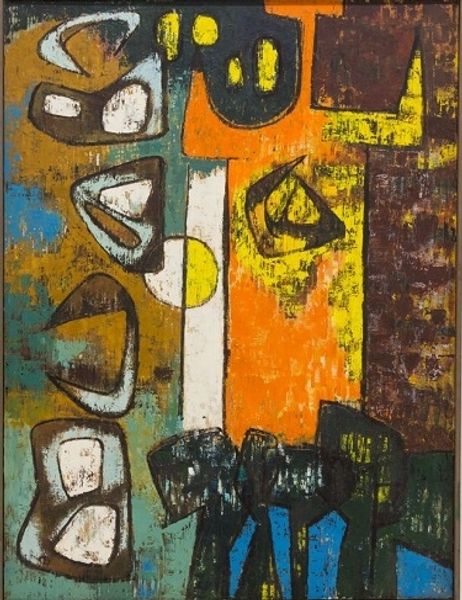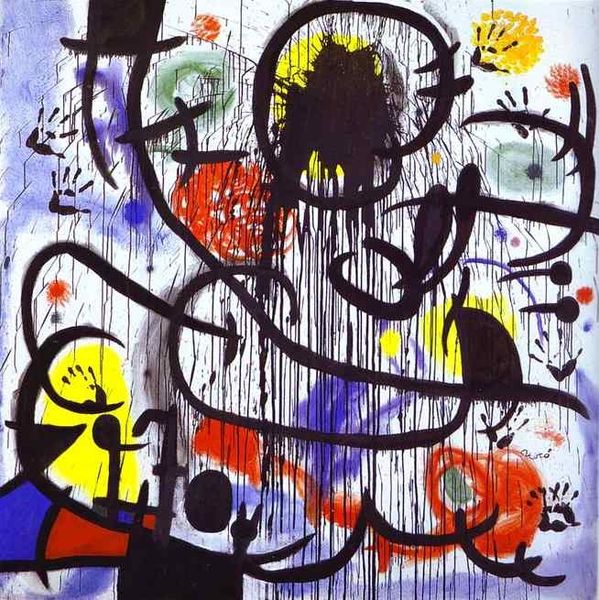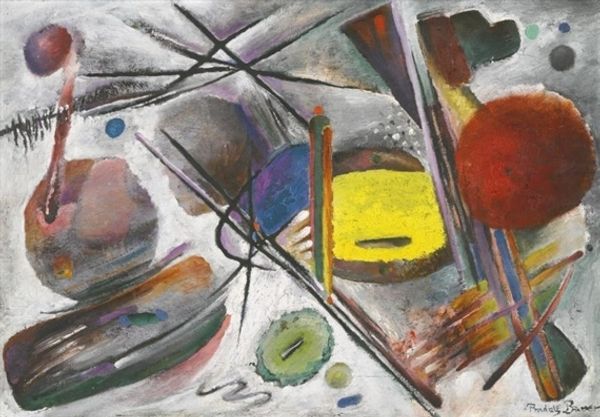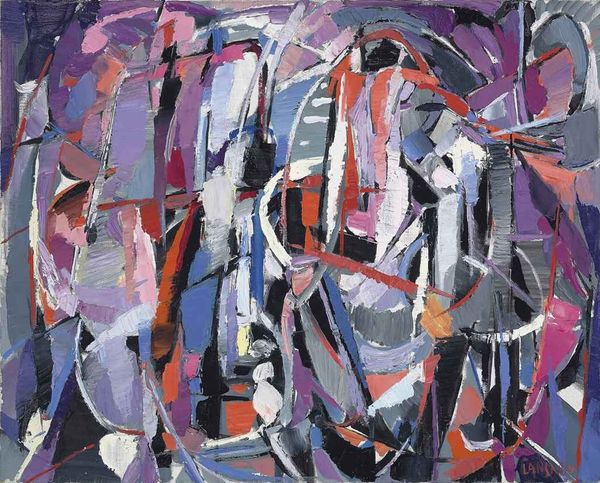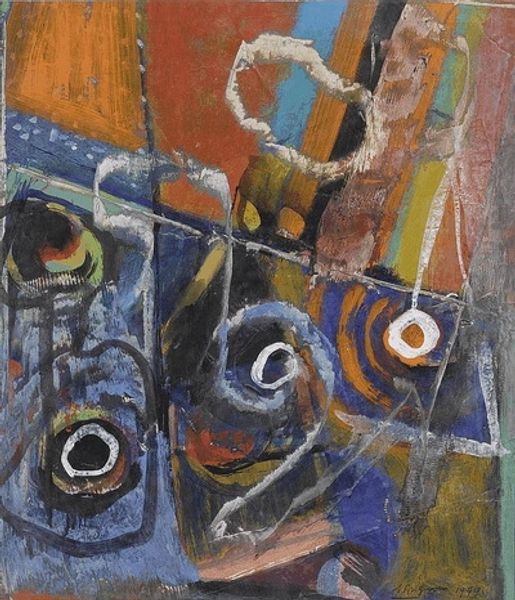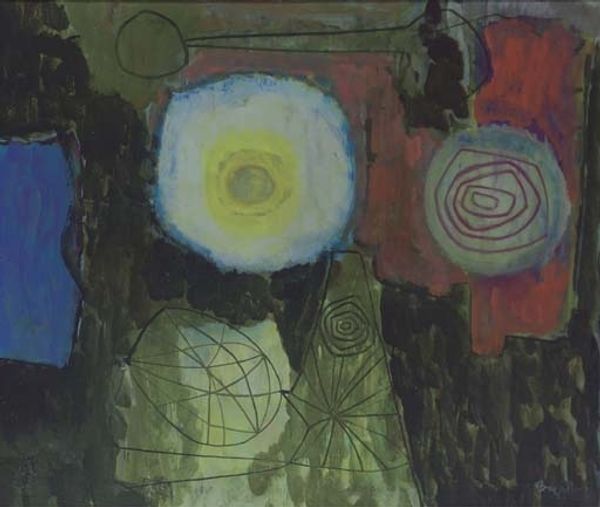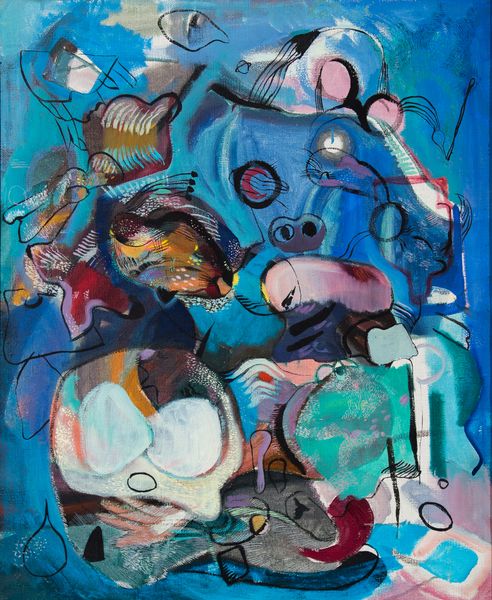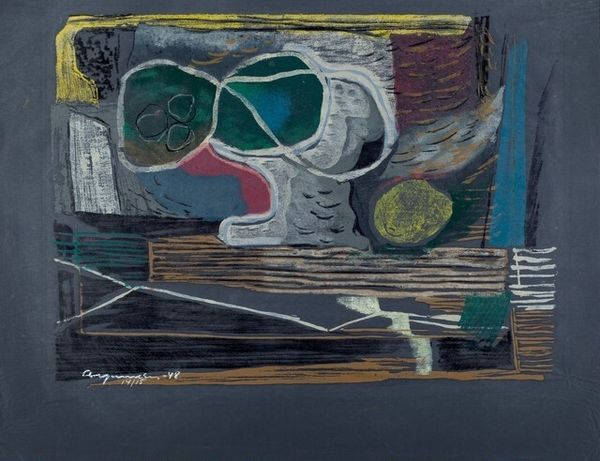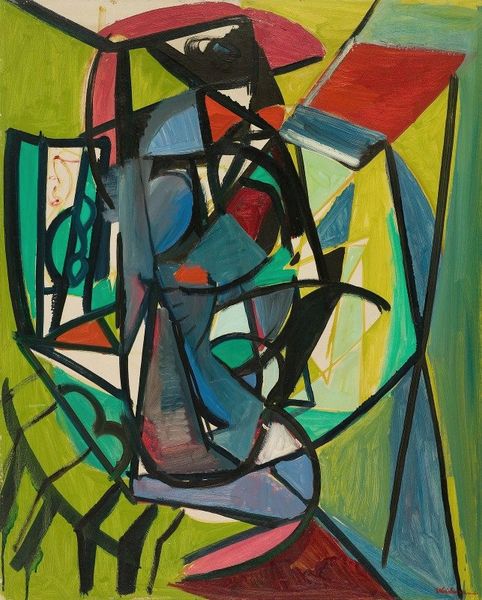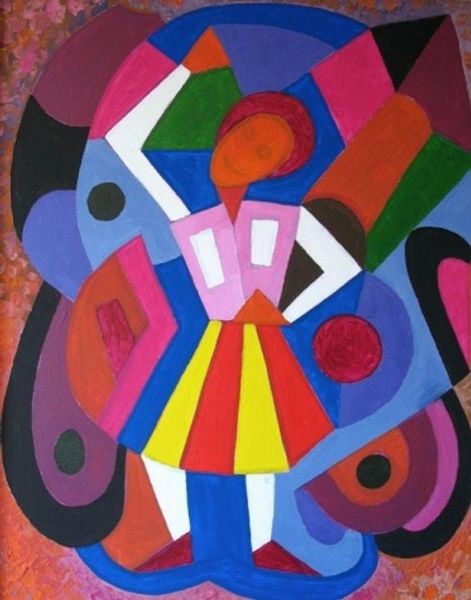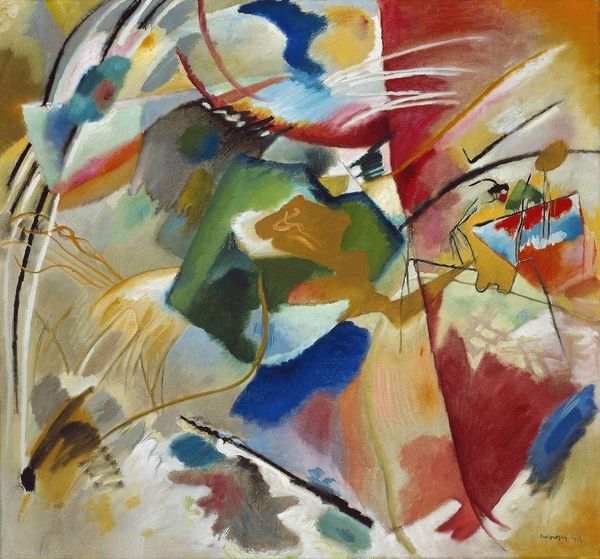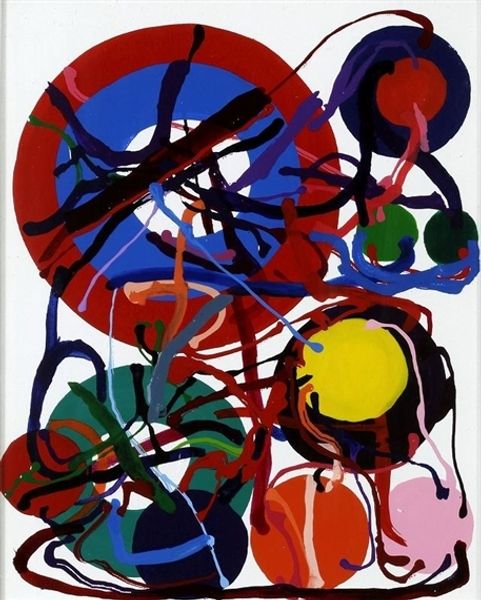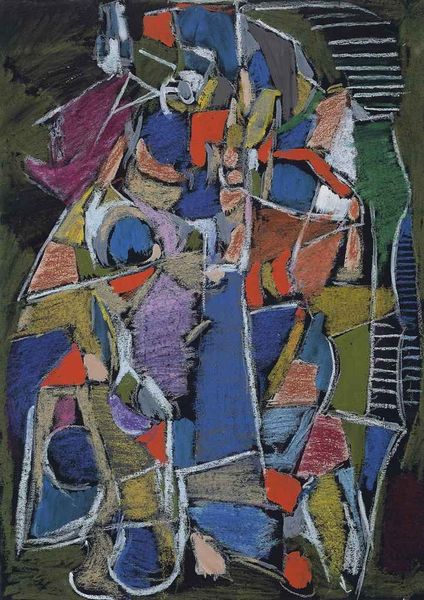
#
abstract painting
#
painted
#
handmade artwork painting
#
fluid art
#
acrylic on canvas
#
street graffiti
#
spray can art
#
paint stroke
#
painting painterly
#
painting art
Dimensions: overall: 78.7 x 116.8 cm (31 x 46 in.) framed: 81.3 x 119.4 x 4.4 cm (32 x 47 x 1 3/4 in.)
Copyright: National Gallery of Art: CC0 1.0
Curator: Bradley Walker Tomlin’s "Maneuver for Position," painted in 1947, certainly presents us with a dynamic composition in acrylic on canvas. What's your immediate take on it? Editor: There's an appealing sense of layered chaos to it, isn't there? Like looking at some indecipherable ancient street graffiti, albeit rendered with quite refined brushwork and coloration. It feels almost like code needing to be deciphered. Curator: It's fascinating how Tomlin navigates abstraction in this post-war period. The title itself, "Maneuver for Position," could allude to the societal repositioning and anxieties present after World War II, mirroring the vying forms on the canvas. Does this connect, perhaps, to debates of modernism at the time? Editor: I think that's astute. Abstract Expressionism, which Tomlin was gravitating toward, became this banner of American individualism, a kind of visual retort to totalitarian regimes that enforced representational art styles. The freedom evident in his brushstrokes and composition reflected that on the American side. Curator: Absolutely. But let's not sideline other perspectives, this "freedom" has largely excluded so many, right? What is the role, therefore, of museums when displaying these works; do they implicitly champion particular political ideals, in this case the canonization of particular masculine figures? What gets foregrounded? What gets obscured in the process? Editor: Valid. The politics of display are intrinsic here. Institutions should ensure the canon, with figures like Tomlin, should engage with works that reflect the range of lived experiences during the same periods and the complexities of what "freedom" signifies for the marginalized groups of the period. Curator: Agreed. When considering the layers, forms, colours – could they signal anxieties about power relations? Do they, in some sense, reveal how marginalised narratives find their own space amidst societal hierarchies? Editor: Intriguing points. The fluidity of the medium itself echoes notions of identity and the potential to shapeshift beyond set expectations, a form of visual deconstruction. What might feel initially like abstract visual jostling soon starts mirroring broader cultural contestations. Curator: "Maneuver for Position", beyond its aesthetic attributes, becomes then a reflection of societal fault lines that we continue to negotiate even today. I appreciate how you tied that in to present discourse. Editor: It's through exploring art in tandem with wider contextual themes that true cultural reflection emerges. I think it provides a stronger foundation for visitors as well, as they traverse through cultural evolutions through art history.
Comments
No comments
Be the first to comment and join the conversation on the ultimate creative platform.
